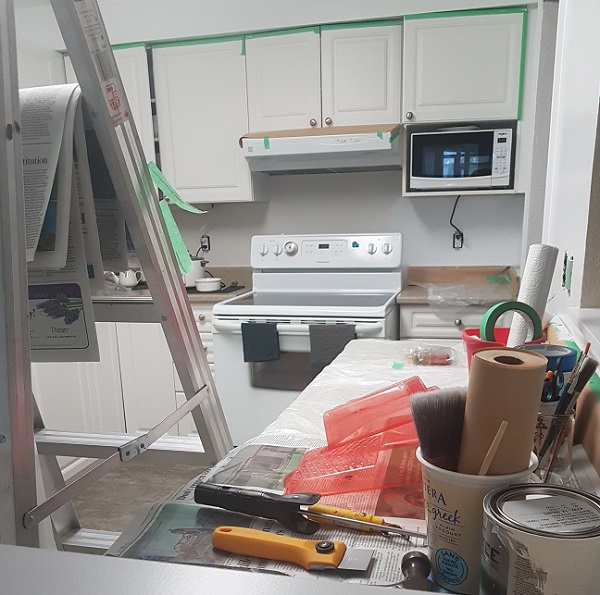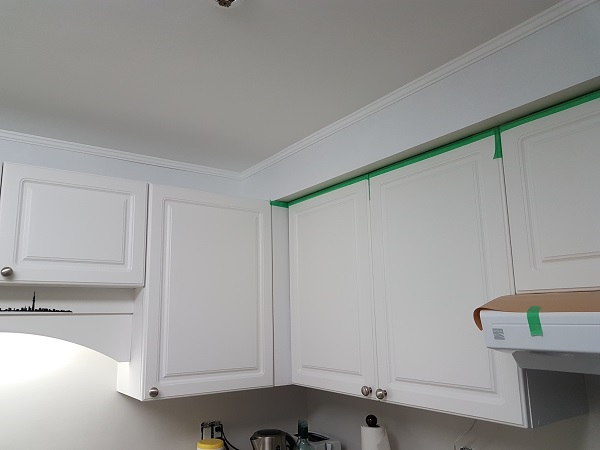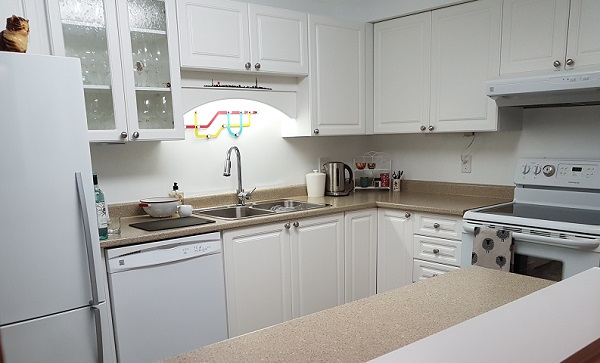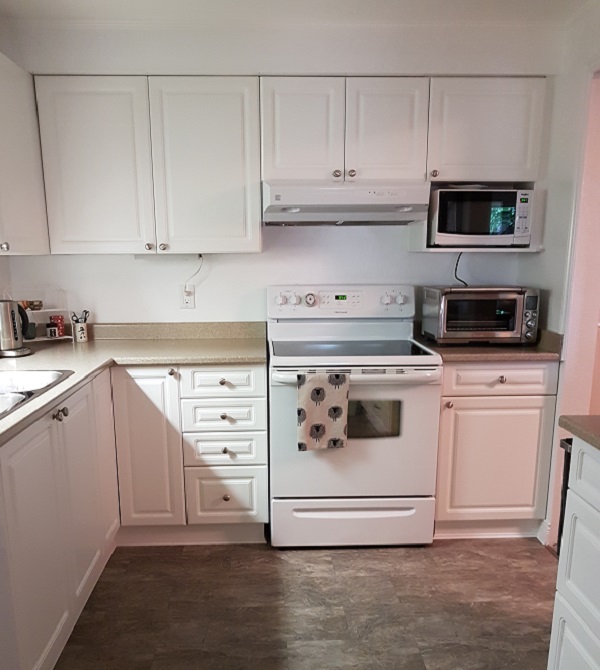Over the past 10 days I made use of the self-isolation period to get rid of the murky gray/brown paint on my kitchen walls and trim. I would have preferred to change the countertop for something less ho-hum and not at war with the floor. However, a liter of paint is less costly and doesn’t require the hassles of scheduling sub-trades. The goal was to unify everything by matching the trim and wall colour to the cabinets.
- Adequate preparation is everything.
- Having everything in place before starting eliminates delays caused by additional trips to the store.

- I’ve learned not to rush the filling and sanding or skip the priming of spots needing repair. The reward for the patience required to do it properly is joy. Any short cut will inevitably show up as a wince-inducing reminder of how much nicer it could have been.
- Having everything in place before starting eliminates delays caused by additional trips to the store.
- Everything will take more time than anticipated.
- This is true with almost any project.
- Increase that exponentially when working on DIY projects during a pandemic. Had I been able to enter the store to fully discuss the project with experienced and knowledgeable staff, I may have avoided having to repaint a section.
- When that happened I chose to chill and be grateful that it filled more time.
- Colour matching is tricky.
- I wanted the walls and trim to match the cabinets. However, I did not know (and could not be advised) that due to the differences in the chemical composition of paints, they would look different. Note the bluish wall tint compared to the trim colour below.

- Therefore, I repainted the area with the alkyd paint I’d bought for the trim.
- Even having done that, the eye will read a colour—even one matched by computer—differently from one surface to another or in different places of the same room. This depends on how nearby elements reflect from the surfaces or how shadows play in a space.
- All the care in gauging colour samples on chips or sample-paint boards in various light conditions and numerous spots in a room won’t guarantee that the end result won’t present as a slight miss-match.
- I wanted the walls and trim to match the cabinets. However, I did not know (and could not be advised) that due to the differences in the chemical composition of paints, they would look different. Note the bluish wall tint compared to the trim colour below.
- Any imperfect end result is usually better than the original starting point.
- Though the perfection imagined at the outset did not quite match the eventual result, the new look is clean and fresh and harmonious.

- Though the perfection imagined at the outset did not quite match the eventual result, the new look is clean and fresh and harmonious.
- Never point out the imperfections in a job.
- Others don’t need to know the flaws in the job–ones left behind by previous trades or ones I made myself. As I didn’t notice many of them until I got my nose deep into the work, most likely no one else will notice either. Why invite it?

- Though I still don’t fancy the countertop, I’m more than happy with the final result.
- Others don’t need to know the flaws in the job–ones left behind by previous trades or ones I made myself. As I didn’t notice many of them until I got my nose deep into the work, most likely no one else will notice either. Why invite it?
